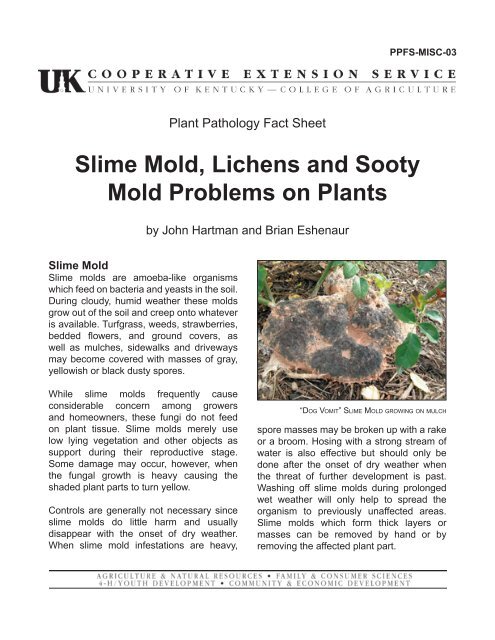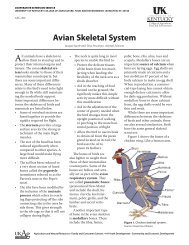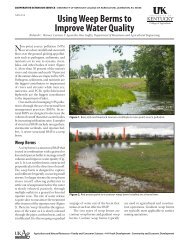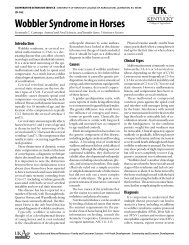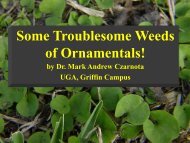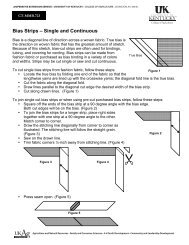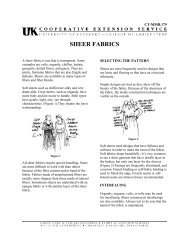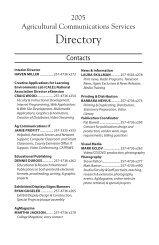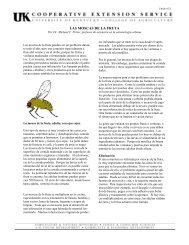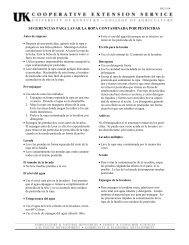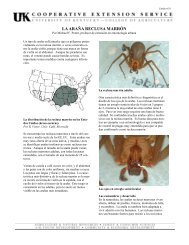Slime Mold, Lichens, and Sooty Mold Problems on Plants (PDF)
Slime Mold, Lichens, and Sooty Mold Problems on Plants (PDF)
Slime Mold, Lichens, and Sooty Mold Problems on Plants (PDF)
You also want an ePaper? Increase the reach of your titles
YUMPU automatically turns print PDFs into web optimized ePapers that Google loves.
PPFS-MISC-03<br />
Plant Pathology Fact Sheet<br />
<str<strong>on</strong>g>Slime</str<strong>on</strong>g> <str<strong>on</strong>g>Mold</str<strong>on</strong>g>, <str<strong>on</strong>g>Lichens</str<strong>on</strong>g> <str<strong>on</strong>g>and</str<strong>on</strong>g> <str<strong>on</strong>g>Sooty</str<strong>on</strong>g><br />
<str<strong>on</strong>g>Mold</str<strong>on</strong>g> <str<strong>on</strong>g>Problems</str<strong>on</strong>g> <strong>on</strong> <strong>Plants</strong><br />
by John Hartman <str<strong>on</strong>g>and</str<strong>on</strong>g> Brian Eshenaur<br />
<str<strong>on</strong>g>Slime</str<strong>on</strong>g> <str<strong>on</strong>g>Mold</str<strong>on</strong>g><br />
<str<strong>on</strong>g>Slime</str<strong>on</strong>g> molds are amoeba-like organisms<br />
which feed <strong>on</strong> bacteria <str<strong>on</strong>g>and</str<strong>on</strong>g> yeasts in the soil.<br />
During cloudy, humid weather these molds<br />
grow out of the soil <str<strong>on</strong>g>and</str<strong>on</strong>g> creep <strong>on</strong>to whatever<br />
is available. Turfgrass, weeds, strawberries,<br />
bedded flowers, <str<strong>on</strong>g>and</str<strong>on</strong>g> ground covers, as<br />
well as mulches, sidewalks <str<strong>on</strong>g>and</str<strong>on</strong>g> driveways<br />
may become covered with masses of gray,<br />
yellowish or black dusty spores.<br />
While slime molds frequently cause<br />
c<strong>on</strong>siderable c<strong>on</strong>cern am<strong>on</strong>g growers<br />
<str<strong>on</strong>g>and</str<strong>on</strong>g> homeowners, these fungi do not feed<br />
<strong>on</strong> plant tissue. <str<strong>on</strong>g>Slime</str<strong>on</strong>g> molds merely use<br />
low lying vegetati<strong>on</strong> <str<strong>on</strong>g>and</str<strong>on</strong>g> other objects as<br />
support during their reproductive stage.<br />
Some damage may occur, however, when<br />
the fungal growth is heavy causing the<br />
shaded plant parts to turn yellow.<br />
C<strong>on</strong>trols are generally not necessary since<br />
slime molds do little harm <str<strong>on</strong>g>and</str<strong>on</strong>g> usually<br />
disappear with the <strong>on</strong>set of dry weather.<br />
When slime mold infestati<strong>on</strong>s are heavy,<br />
“DOG VOMIT” SLIME MOLD GROWING ON MULCH<br />
spore masses may be broken up with a rake<br />
or a broom. Hosing with a str<strong>on</strong>g stream of<br />
water is also effective but should <strong>on</strong>ly be<br />
d<strong>on</strong>e after the <strong>on</strong>set of dry weather when<br />
the threat of further development is past.<br />
Washing off slime molds during prol<strong>on</strong>ged<br />
wet weather will <strong>on</strong>ly help to spread the<br />
organism to previously unaffected areas.<br />
<str<strong>on</strong>g>Slime</str<strong>on</strong>g> molds which form thick layers or<br />
masses can be removed by h<str<strong>on</strong>g>and</str<strong>on</strong>g> or by<br />
removing the affected plant part.
<str<strong>on</strong>g>Lichens</str<strong>on</strong>g><br />
A lichen is actually composed of two different<br />
organisms, an alga <str<strong>on</strong>g>and</str<strong>on</strong>g> a fungus, which<br />
grow together for the mutual benefit of <strong>on</strong>e<br />
another. These crusty or leaf-like organisms<br />
may be a variety of colors, including brown,<br />
gray, green, yellow <str<strong>on</strong>g>and</str<strong>on</strong>g> white.<br />
<str<strong>on</strong>g>Lichens</str<strong>on</strong>g> form <strong>on</strong> a variety of surfaces, such<br />
as rocks, soil, <str<strong>on</strong>g>and</str<strong>on</strong>g> fallen logs, as well as <strong>on</strong><br />
the bark of living trees. When lichens are<br />
noticed <strong>on</strong> trees, they are often thought to<br />
LICHEN ON THE TRUNK OF A MAPLE TREE<br />
be of disease organism. <str<strong>on</strong>g>Lichens</str<strong>on</strong>g> frequently<br />
appear <strong>on</strong> the trunks or branches of trees that<br />
are in poor or declining c<strong>on</strong>diti<strong>on</strong>. While their<br />
presence may indicate there is a problem,<br />
they are not in themselves harmful.<br />
<str<strong>on</strong>g>Sooty</str<strong>on</strong>g> <str<strong>on</strong>g>Mold</str<strong>on</strong>g><br />
<str<strong>on</strong>g>Sooty</str<strong>on</strong>g> molds are dark-spored fungi which<br />
grow <strong>on</strong> the sugary “h<strong>on</strong>eydew” excreti<strong>on</strong>s<br />
of certain insects. Aphids are the most<br />
comm<strong>on</strong> h<strong>on</strong>eydew producers, but other<br />
SOOTY MOLD ON A RHODENDRON LEAF<br />
sucking insects (such as white flies <str<strong>on</strong>g>and</str<strong>on</strong>g><br />
scale insects) may also leave h<strong>on</strong>eydew<br />
deposits. H<strong>on</strong>eydew may drip from the<br />
site of insect activity <strong>on</strong>to objects or plants<br />
below (e.g. cars, houses, signs, ground<br />
covers). The dark-colored fungi growing<br />
<strong>on</strong> these excreti<strong>on</strong>s give plant surfaces or<br />
other objects a black, sooty appearance.<br />
<str<strong>on</strong>g>Sooty</str<strong>on</strong>g> mold fungi derive their nutriti<strong>on</strong> from<br />
the h<strong>on</strong>eydew <str<strong>on</strong>g>and</str<strong>on</strong>g> not from the plant. When<br />
sooty mold growth is heavy, the shaded<br />
tissue may turn yellow. We most frequently<br />
observe sooty mold problems <strong>on</strong> tuliptree<br />
<str<strong>on</strong>g>and</str<strong>on</strong>g> various species of pine.<br />
<str<strong>on</strong>g>Sooty</str<strong>on</strong>g> mold growth can be prevented by<br />
c<strong>on</strong>trolling the insect or insects resp<strong>on</strong>sible<br />
for leaving h<strong>on</strong>eydew deposits. Your County<br />
Extensi<strong>on</strong> Agent or Extensi<strong>on</strong> Entomologist<br />
can recommend an insecticide. Generally,<br />
the sooty mold fungi can be left al<strong>on</strong>e to<br />
“weather off” with time. While the black<br />
growth may be c<strong>on</strong>sidered “unsightly”, it will<br />
rarely endanger the plant’s health.<br />
(Revised 8-06)<br />
Educati<strong>on</strong>al programs of the Kentucky Cooperative Extensi<strong>on</strong> Service serve all people regardless of race,<br />
color, age, sex, religi<strong>on</strong>, disability, or nati<strong>on</strong>al origin.


